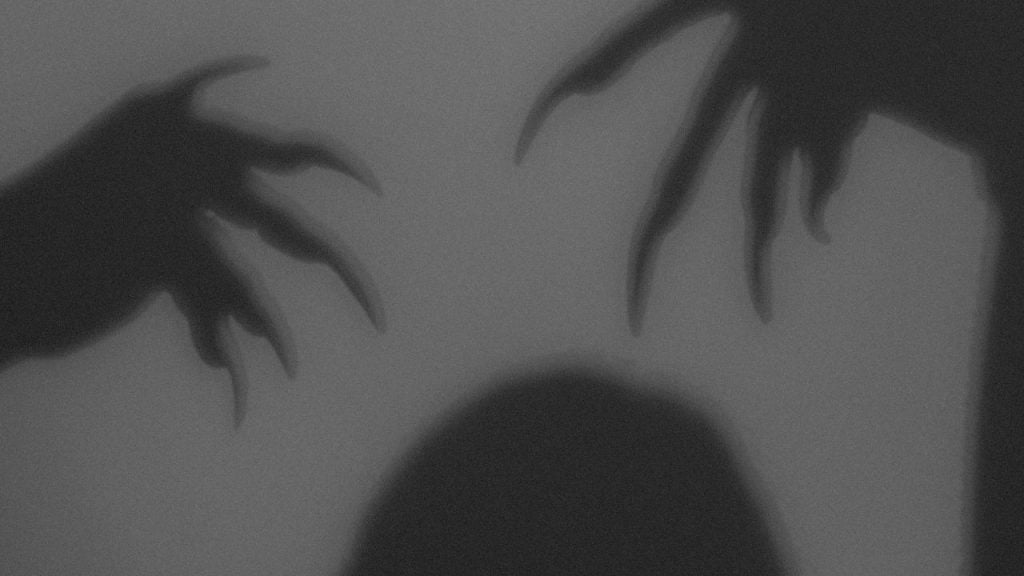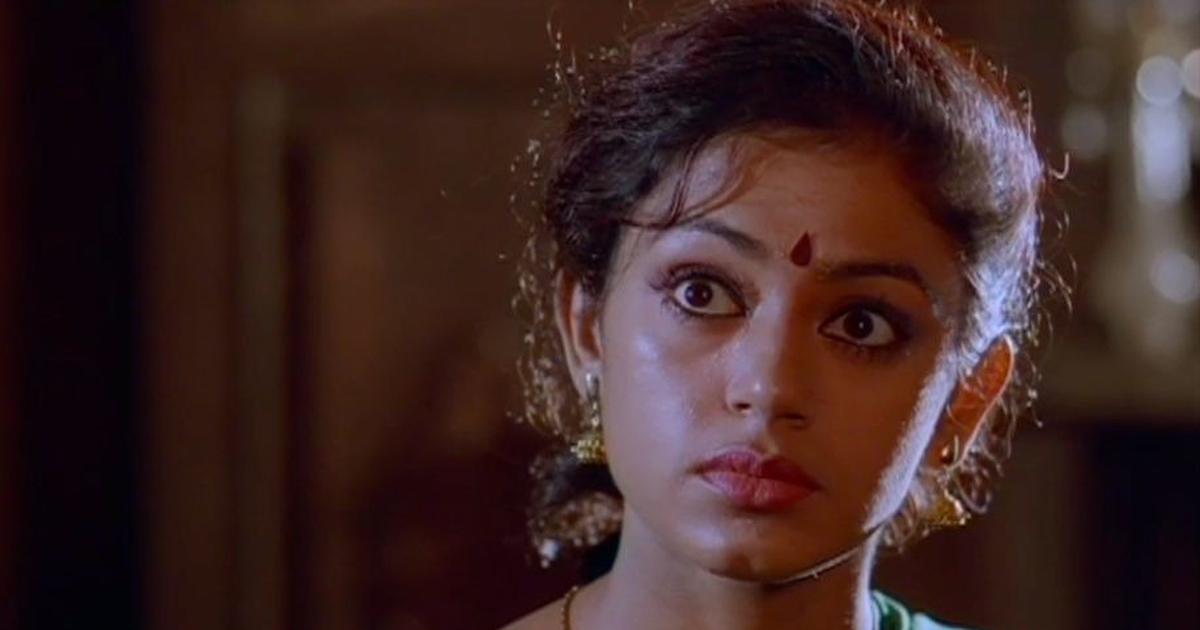Within Indian cinema, particularly regional South Indian films, the portrayal of the monstrous takes interesting incarnations. In a land that is indivisibly bound by religious myths, fears and fantasies, the truly horrifying is the cultural monster that grips the psyche of the spectator. The southern states of the country abound with tales of the yakshi. Renderings of the possessed female spirit invoke memories of old folktales and invite a host of anxieties among the local audiences. Exploring common descriptions of figures like yakshi in regional cinema’s horror genre triggers questions about configurations of gender, power and the supernatural in popular imaginations.
Manichithrathazhu (The Ornate Lock) has long enjoyed its status as a cult classic in Kerala. Inspiring remakes in various other languages (Chandramukhi in Tamil and Bhool Bhulaiyaa in Hindi), the film is known to have led the way for psychological horror in Mollywood. Directed by Fazil, Manichithrathazhu follows the story of the subconscious transformation of Ganga, an educated woman from the city into Nagavalli, a mythical female ghost.
In showing the possession by a cultural monster of the female body which then visibly transforms into a fearsome Other, the magic of exhibitionistic attractions spill into the narrative of the film. As the sheer force of Nagavalli’s spectral voice projects through Ganga’s corporeality, the viewer is only witnessing the surface of a well-made horror film. Beyond the frame and the metaphor lies the long-standing tradition of descriptions of femininity in fictional narratives.
Of monsters and men: figures of horror in the collective imagination
In literary fantasies that emerge out of Kerala, monstrous entities take on strange forms. These manifestations are reflected in the art of the state. Popular poet Edasseri’s masterpiece Poothapattu describes the female Pootham, a folklore idolatry character, as a poltergeist whose dark, grotesque figure is covered in “bright crescent moons.” She coyly waits by the wayside, luring unfortunate young men, tempted by her beauty, to their untimely deaths. As she “drinks their saline crimson blood slurping. Bones and hair are scattered on the hard rock,” Edasseri creates a monster in the eerie likeness of a human. It is exactly this phenomenon, when the non-human overlaps with the human, that socio-political dimensions percolate into the terrain of horror fiction.

Factors of race, gender, and sexuality intersect on the body of this inhuman monster. In analysing these representations and extended metaphors, the viewer inevitably better understands the temperament of the society they live in. “Monsters can stand as symbols of human vulnerability and crisis, and as such they play imaginative foils for thinking about our own responses to menace,” notes scholar Stephen T. Asma.
Within this performative logic of the human mind, monsters transform into “ontological realities that are experienced viscerally, shape human behaviour and leave tangible traces,” according to researcher Arumugam. As beings of influence in the cinematic terrain, aliens, poothams, nagins, vampires, werewolves, and yakshis represent an animality that can be equated directly to monstrosity. In this space, the case of the ‘gender monster,’ then, undeniably gains ascendancy.
The ‘gender monster’ in Mollywood
From the very first horror story in Mollywood, titled Bhargavi Nilayam (1964), the figure of the cultural monster has been at the centre of the filmmaker’s desire to tap into the folkloric, primal instincts of the viewer’s brain. The 1993 Malayalam film Manichithrathazhu shows its protagonist Ganga’s visit to her husband’s traditional home. Here, she learns the myth of Nagavalli, a classical dancer, brutally murdered at the hands of a feudal lord. Ganga’s sympathy towards Nagavalli, along with her repressed past experiences, leads to her psychological transformation into a mythical dancer. As the Self slips into the Other, and the suppressed invades the human ideal, the gender monster is born on Mollywood’s screen.

Traditional yakshi stories feature a transformation of a beautiful young woman into a terrifying female ghost. She tempts men, kills them and wanders through human inhabitations, seeking deliverance. Similar to most other monsters, the yakshi is also a shape-shifter. Her true identity is usually dormant under a layer of normalcy, appearing only when it is necessary. Scholars Sony Jalarajan Raj and Adith K. Suresh identify that this variant of the female ghost is what can be described as the gothic romantic ideal.
The male gaze splits the heroine into two – the desirable and the terrifying. Ganga’s disfigured femininity is situated at the heart of The Ornate Lock. The dichotomy of the heroine’s dual personalities is defined by the emotional response of the witnesses of her dissociative disorder-the audience.
The pleasurable fear that is projected onto the yakshi can be equally applied to Ganga/Nagavalli. The male gaze splits the heroine into two – the desirable and the terrifying. Ganga’s disfigured femininity is situated at the heart of The Ornate Lock. The dichotomy of the heroine’s dual personalities is defined by the emotional response of the witnesses of her dissociative disorder-the audience.
Ganga represents the model romantic subject, perpetually available to her husband, in contrast to Nagavalli, who embodies the cultural Other—a corrupted form of femininity whose subversive and violent outbursts destabilise the ideal. The feared woman routinely collapses social boundaries, does not obey her patriarchal custodian and stands to symbolise resistance against a heteronormative social structure.
Queering Ganga: a gendered reading of Manichitrathazhu
A modern, feminist appraisal of Manichitrathazhu or any other yakshi film in Mollywood, reveals how cultural fears shape the on-screen monstrous Others. The “gender monster” in these films reimagines the representation of sexuality and gender as distortions, becoming demonic embodiments of underlying identity politics in society. These figures are not merely aberrations but are symptomatic of deformed and disfigured perceptions of desire, sexuality, and social relations, revealing the latent anxieties and ideological conflicts inherent in cultural constructions of gender. The hysteric Nagavalli is portrayed as a menace, a disturber and a threat to the normalcy of the patriarchal society.

Educated and from the city, Ganga is already a representative of modernity. Her place in her husband’s ancient family home, from the very beginning, has a quality of precariousness and uncertainty. She is set apart from all other women in her husband’s family due to her education and her sensibilities. The Othering begins here. Ganga can be viewed as a symbol of the progressive woman from the 1990s—rooted in Kerala’s traditions but shaped by her experiences and education beyond the state’s borders. Upon her return to Kerala, she emerges as a thoughtful and autonomous individual, positioning herself as a potential threat—an abject figure—to the entrenched masculine dominance at the house.
Barbara Creed, critic and scholar asks, “All human societies have a conception of the monstrous-feminine, what it is about woman that is shocking, terrifying, horrific, abject.” She further examines the concept of the monstrous-feminine, drawing on the myth of the vagina dentata, and posits that, much like other feminine identities—ranging from virgin to whore—the monstrous-feminine is also conducted through the lens of her sexuality.
In this home, Ganga effortlessly finds pockets of time to slip into her lurking monstrosity. Her husband’s neglect of her sexual needs is implied throughout. The couple engage in functional conversations and Ganga dozes off much before her husband can join in. The denial of Ganga’s libidinal and intellectual demands further manifests in her transformations. When she opens the ornate lock that she was warned against, a feminist reading allows us to view the act as an agential decision to command her creativity. The nature of Ganga’s obsession with Nagavalli and her subsequent attempts to realise her sexual desires complicates the relationship by queering traditional boundaries of identity and desire.
Yakshi films that emerge out of the South retain this element of “deviant” sexualities. A woman’s transgression from her patriarchal identity is an aberration that must be immediately cured. In Manichithrathazhu, the portrayal of Ganga’s transformation and her queering of identity and desire challenges the rigid structures of patriarchal society, highlighting the anxieties surrounding female autonomy and sexuality. The film ultimately reveals how cultural fears and gendered expectations shape the “monstrous feminine,” forcing a confrontation with the boundaries of normativity and resistance.
About the author(s)
Gayathri S (she/her) is currently pursuing her master's in English. With a deep-rooted love for literature and writing, she hopes to streamline her interests towards a career in journalism. Alongside her studies, Gayathri has gained practical experience through internships in content writing, editing, and research. These opportunities have strengthened her commitment to impactful storytelling and managing projects aligned with broader social goals. Gayathri looks forward to merging her passion for writing with journalism, where she can explore and report on diverse narratives.





